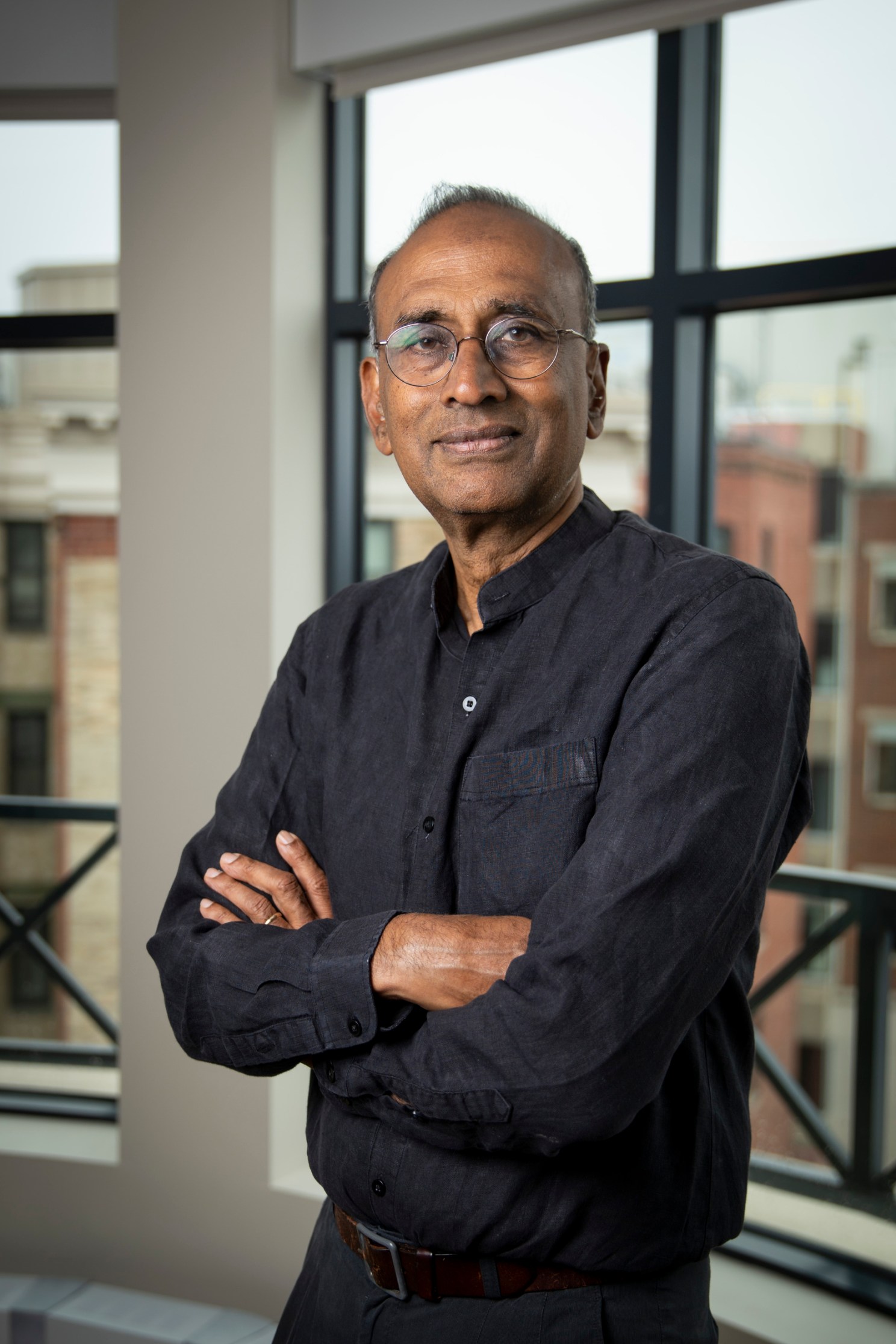
Venki Ramakrishnan.
Niles Singer/Harvard Staff Photographer
Science is making anti-aging progress. But do we want to live forever?
Nobel laureate details new book, which surveys research, touches on larger philosophical questions
Mayflies live for only a day. Galapagos tortoises can reach up to age 170. The Greenland shark holds the world record at over 400 years of life.
Venki Ramakrishnan, Nobel laureate and author of the newly released “Why We Die: The New Science of Aging and the Quest for Immortality,” opened his packed Harvard Science Book Talk last week by noting the vast variabilities of lifespans across the natural world. Death is certain, so far as we know. But there’s no physical or chemical law that says it must happen at a fixed time, which raises other, more philosophical issues.
The “why” behind these enormous swings, and the quest to harness longevity for humans, have driven fevered attempts (and billions of dollars in research spending) to slow or stop aging. Ramakrishnan’s book is a dispassionate journey through current scientific understanding of aging and death, which basically comes down to an accumulation of chemical damage to molecules and cells.
“The question is whether we can tackle aging processes, while still keeping us who we are as humans,” said Ramakrishnan during his conversation with Antonio Regalado, a writer for the MIT Technology Review. “And whether we can do that in a safe and effective way.”
Even if immortality — or just living for a very, very long time — were theoretically possible through science, should we pursue it? Ramakrishnan likened the question to other moral ponderings.
“There’s no physical or chemical law that says we can’t colonize other galaxies, or outer space, or even Mars,” he said. “I would put it in that same category. And it would require huge breakthroughs, which we haven’t made yet.”
In fact, we’re a lot closer to big breakthroughs when it comes to chasing immortality. Ramakrishnan noted the field is moving so fast that a book like his can capture but a snippet. He then took the audience on a brief tour of some of the major directions of aging research. And much of it, he said, started in unexpected places.
Take rapamycin, a drug first isolated in the 1960s from a bacterium on Easter Island found to have antifungal, immunosuppressant, and anticancer properties. Rapamycin targets the TOR pathway, a large molecular signaling cascade within cells that regulates many functions fundamental to life. Rapamycin has garnered renewed attention for its potential to reverse the aging process by targeting cellular signaling associated with physiological changes and diseases in older adults.
Other directions include mimicking the anti-aging effects of caloric restriction shown in mice, as well as one particularly exciting area called cellular reprogramming. That means taking fully developed cells and essentially turning back the clock on their development.
The most famous foundational experiment in this area was by Kyoto University scientist and Nobel laureate Shinya Yamanaka, who showed that just four transcription factors could revert an adult cell all the way back to a pluripotent stem cell, creating what are now known as induced pluripotent stem cells.
Ramakrishnan, a scientist at England’s MRC Laboratory of Molecular Biology, won the 2009 Nobel Prize in chemistry for uncovering the structure of the ribosome. He said he felt qualified to write the book because he has “no skin in the game” of aging research. As a molecular biologist who has studied fundamental processes of how cells make proteins, he had connections in the field but wasn’t too close to any of it.
While researching the book, he took pains to avoid interviewing scientists with commercial ventures tied to aging.
The potential for conflicts of interest abound.
The world has seen an explosion in aging research in recent decades, with billions of dollars spent by government agencies and private companies. And the consumer market for products is forecast to hit $93 billion by 2027.
As a result, false or exaggerated claims by companies promising longer life are currently on the rise, Ramakrishnan noted. He shared one example: Supplements designed to lengthen a person’s telomeres, or genetic segments that shrink with age, are available on Amazon.
“Of course, these are not FDA approved. There are no clinical trials, and it’s not clear what their basis is,” he said.
But still there appears to be some demand.
Get the best of the Gazette delivered to your inbox
By subscribing to this newsletter you’re agreeing to our privacy policy





